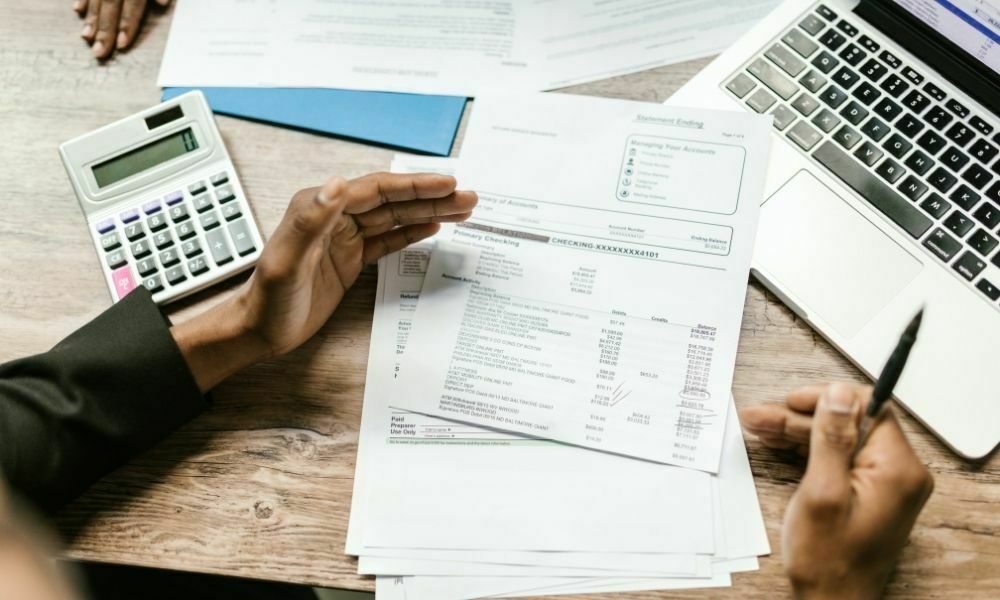7 Ways To Consolidate Debt
- Personal loan
This is the most common form of debt consolidation, and it involves taking out an unsecured loan from a bank, credit union, or online lender. The good thing is that the application process can be done online.
The upside of consolidating with personal loans is you enjoy flexible payment terms with lower interest rates. Credit unions are better than online lenders because they give you more flexible terms and lower rates.
However, banks provide better rates with higher loan amounts and lower rates, especially for borrowers with a good credit score. With online lenders, you have to prequalify for a credit card debt consolidation which gives you a chance to peak at the interest rate, loan amount, and loan terms.
The four factors determining whether you qualify for a personal loan include income, credit score, total assets, and total debts. At the same time, some online lenders add a few metrics such as educational level, employment history, and current residence. This is particularly useful for new borrowers who do not have a robust credit report.
Keep in mind that consolidating your debts with a personal loan will require you to pay additional fees, such as origination and closing costs. Make sure to use a debt consolidation calculator to compare the rate from different lenders and savings.
- 401 (k) loan
Although we do not recommend withdrawing money from your retirement savings unless it is an emergency, debt consolidation by taking a 401(k) loan is better than a personal loan as you enjoy a much lower interest rate.
Furthermore, you do not have to go through a credit check, thus not affecting your credit rating. Instead, it helps improve your credit score by paying off the loans.
Note that leveraging your 401(k) attracts a heavy penalty if you cant repay and significantly reduces your retirement fund. And if you happen to lose your job, your payback due date may be brought forward
- Debt management plan
Non-profit credit counseling agencies offer this program to help people struggling to pay off their loans and credit card debts. However, they do not cover student loans or secured loans.
Before contracting their services, a credit counselor reviews your loans with you to see if DMP is ideal for you. And if it’s a viable option, the counselor gets in contact with your lenders and negotiates for a better and lower interest rate or monthly payments.
And after they agree, you’ll be making payments to the agency, and the agency will pay the creditors on your behalf.
After you sign up for this service, your credit counselor provides some requirements; to close your credit cards and avoid taking any more loans. If you default on the requirements, your credit counselor may withdraw you from the program.
- Take out the second mortgage
If your house has significant equity, you can consider taking out a second mortgage to consolidate your debts. This method is preferred because of the low-interest rates, but you risk damaging your credit score and losing the asset. This is because you might lose your home if you fail to make payments.
- Peer-to-peer lending
This is a lending platform that brings together borrowers and investors. This platform aims to create a win-win situation for both parties.
The borrowers apply for a debt consolidation while the investors are after a return on investment, and interest. People applying for debt consolidation on this platform have to undergo rigorous checks before they are approved to minimize the risks of defaults.
- Tap into vehicle equity
Like tapping into your home equity, you can also tap into your vehicle equity. If you have finished paying off your car loan, its value is more than that of your overall debts. You can consider using it as collateral and take out a loan to pay all your creditors. With a secured loan, you have a higher chance of being approved for a loan.
The downside of this loan is that the money is capped at the car’s value, and if you fail to pay, your vehicle will be auctioned. More so, you will also be required to pay full insurance, which could increase your monthly expenses.
- Balance transfers
It is also known as credit card refinancing. The majority of new credit cards offer an introductory 0% APR of between 12 to 18 months. So you can consider consolidating your credit card debts and transferring to a new credit card with a longer promotional period.
This means that your loan will not attract any interest for that period. The downside of this method is that you’ll need an excellent credit score of 690+ to qualify, which is a rarity with many credit card owners.
Some balance transfer cards charge an annual fee, while others offer a one-time balance transfer change cost ranging from 3% to 5% of the total amount transferred. Therefore, before you settle on any card, calculate how much you will be saving and whether it will cater to the transfer cost.
Your goal should be to pay off the loan while you are still of the 0% APR because once the period is over, your loan will be charged at the regular interest rate.
Summing Up
A credit card reward program is a terrific way to earn back some cash and save up for your next vacation, but be careful not to be swallowed up in debt. Credit cards have a high APR which can balloon your overall debts in just a year or two, wiping out the few benefits.
Debt consolidation is an excellent option to help you clear these debts and gain financial freedom. You can seek financial advice from a debt consolidation expert to see what option best suits your needs.




